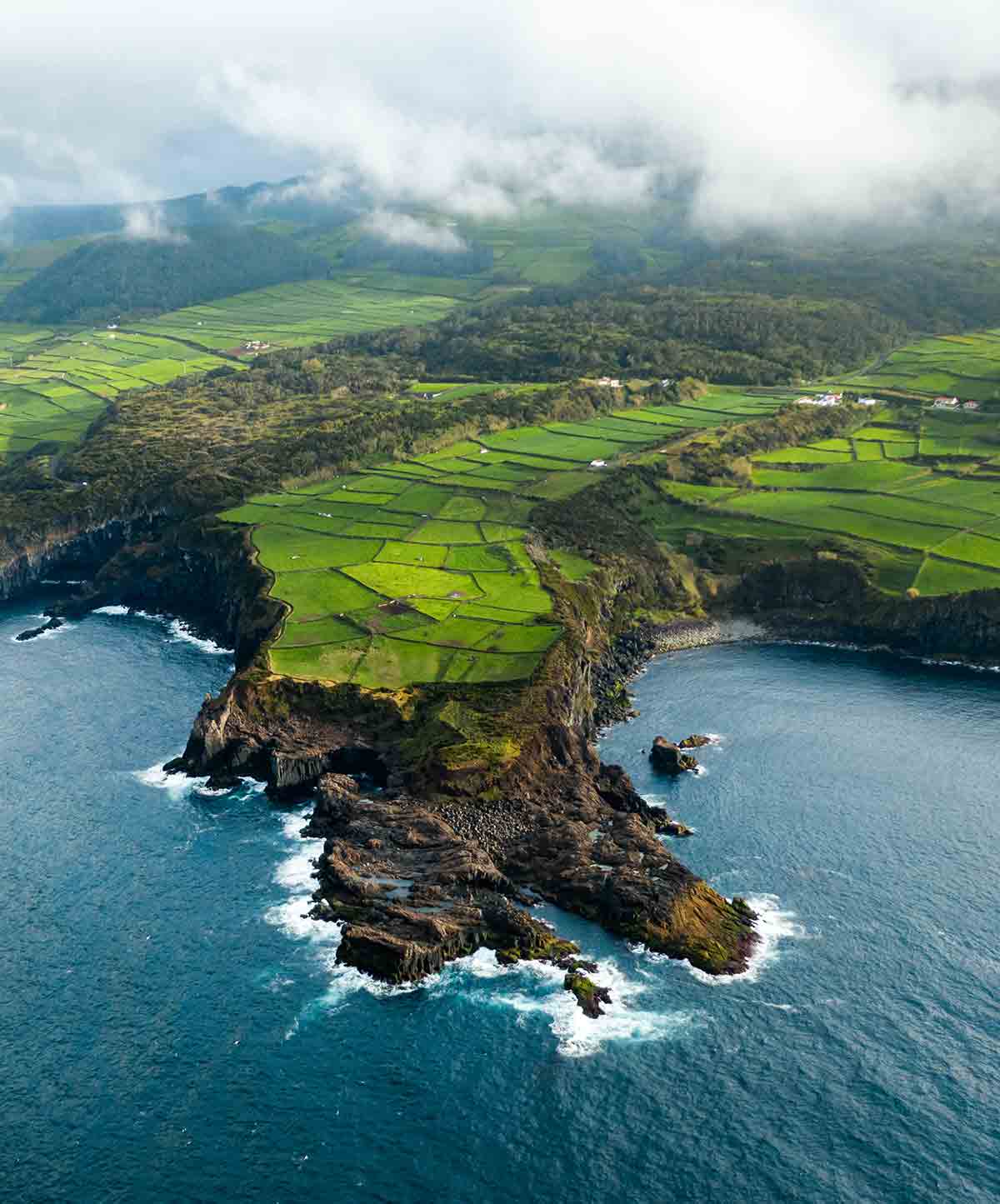
Most people, regardless of what they think, know surprisingly little about my family’s homeland. And even less about Azorean food. And for good reason. The Portuguese islands—São Miguel, Faial, São Jorge and six others—are strewn some 1,000 miles off the coast of Portugal and are happily marooned in the middle of the Atlantic. Unfortunately, so, too is our distinctive cuisine.
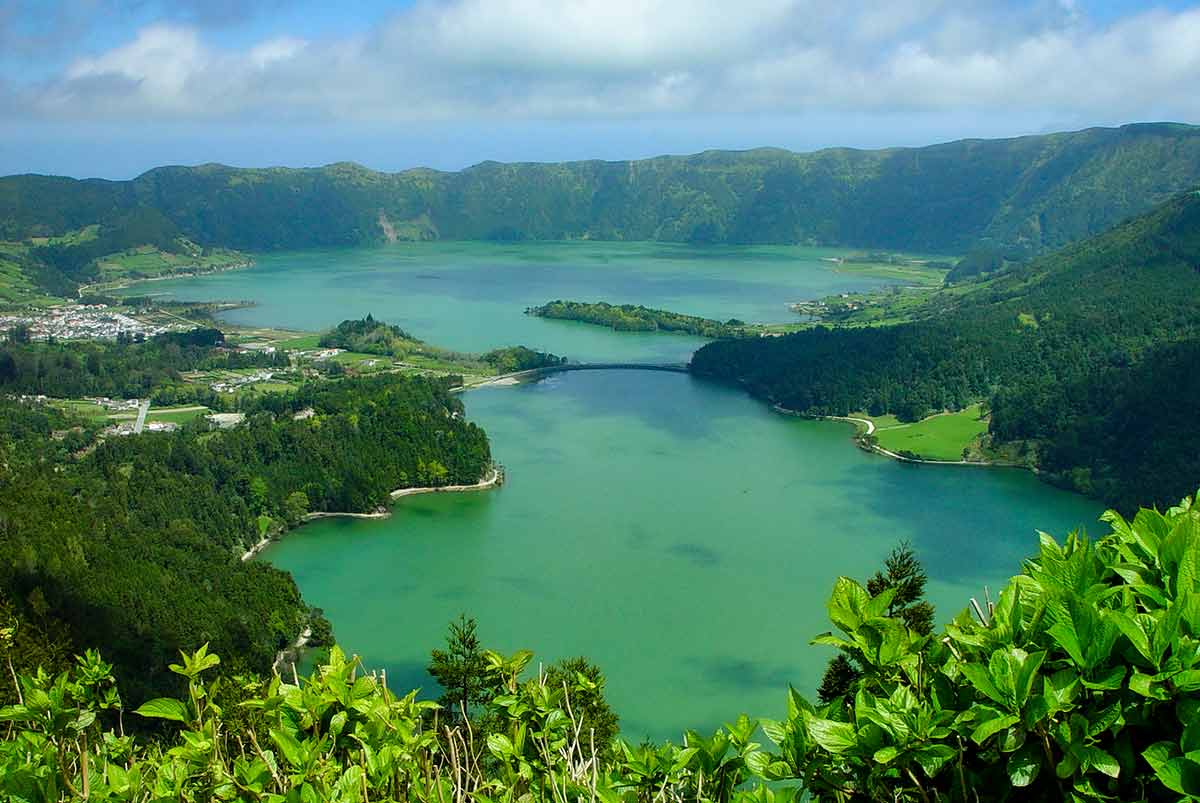
What is Azorean cooking
Geographic isolation is only one conspirator contributing to the invisibility of Azorean food. Like most peasant cuisines, Azorean cooking is home-based and frugal. Economics prevent most families from frequenting restaurants.
My ancestors were so poor that açordas—brothy soups brimming with chunks of crusty leftover homemade bread—were sometimes all there was to fill bellies.
Consequently, owning a café or pastelarias (pastry shop) held little promise. Unlike Chinese and Italian immigrants, Azoreans who arrived in the United States during the great waves of immigration in the early part of the 20th century rarely opened eating establishments. In turn, Azorean food remained largely undiscovered by Americans.
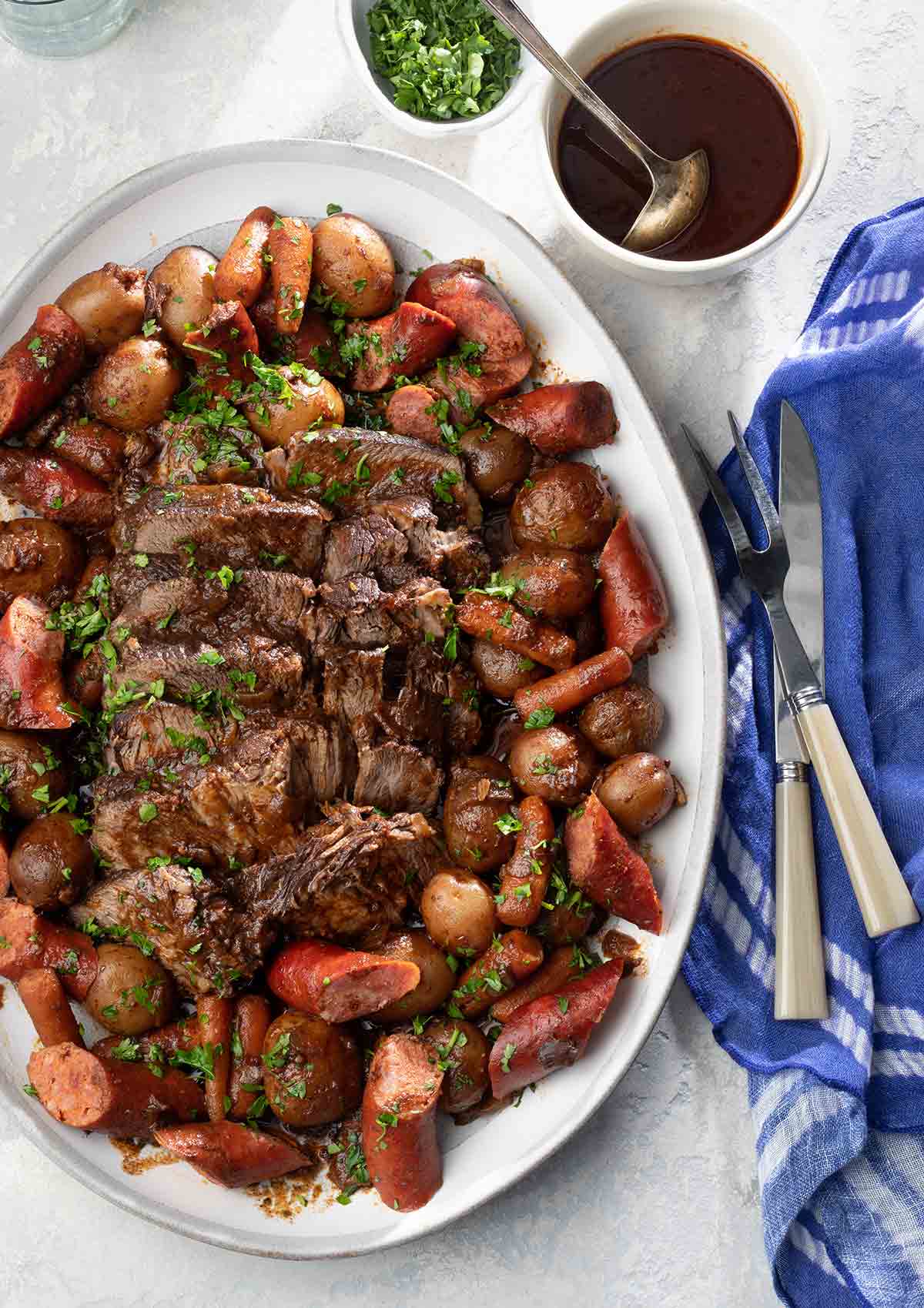
Mama Leite’s Carne Assada
Those mothers and grandmothers who wanted to formally share their cooking legacy were thwarted by illiteracy because in the Old Country most of them weren’t required to attend school. Without any written recipes, many family favorites disappeared when the cooks passed away.
Despite such obstacles, Azorean food has managed to thrive—and even resist being overtaken by the trendy Mediterranean-based cuisine of mainland Portugal.
Influences
“Our food is more authentic Portuguese because we have fewer Spanish influences,” says Ana Taveira, a well-known cook on the island of São Miguel. “We don’t use much cilantro, curry, or cinnamon. We’re more heavy-handed with other spices, especially the hot ones.” She adds proudly, “Ours is a simple, hearty food.”
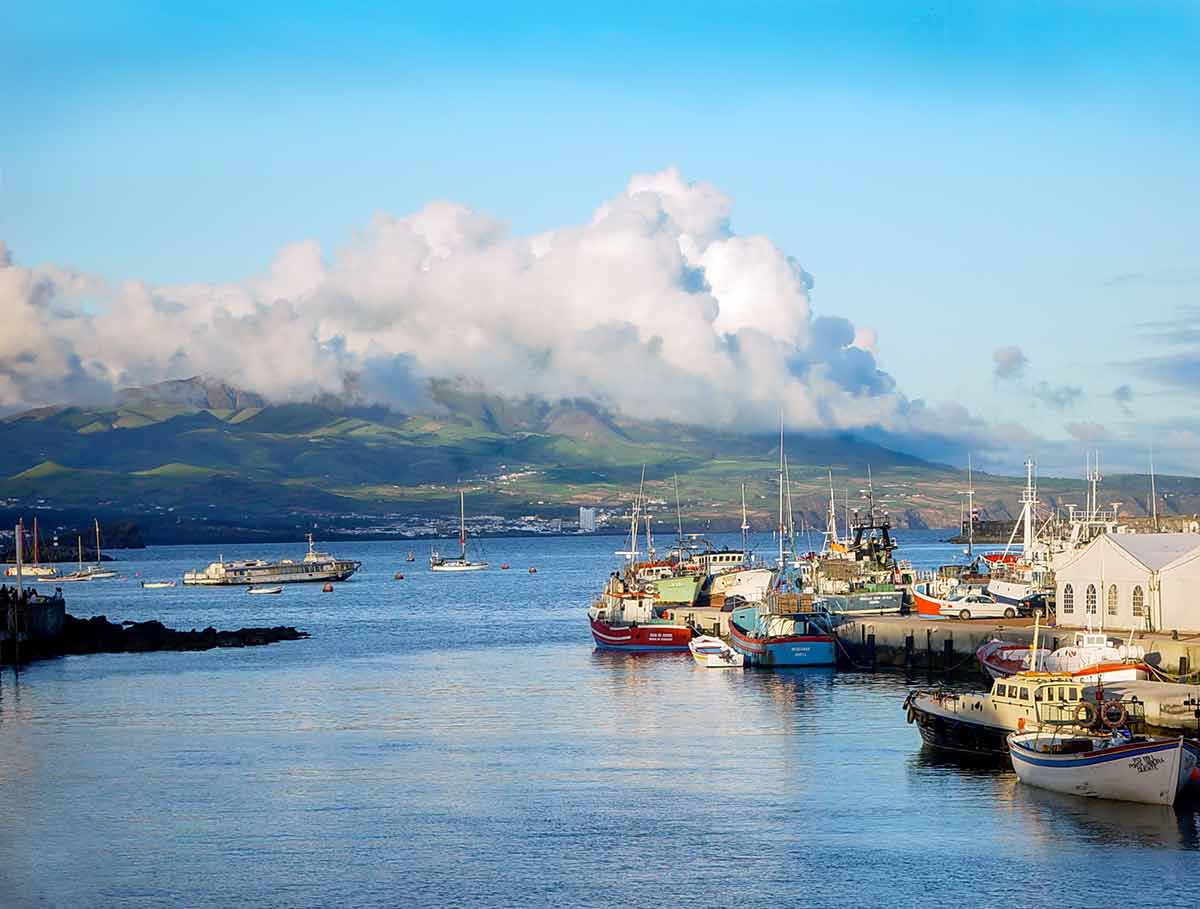
Ponta Delgada harbor
Food differences among the islands
Given that the islands are so tiny, the archipelago’s foods are remarkably regionalized, differing by island, town, and even vizinhança, or neighborhood. According to Deolinda Avila, author of the self-published “Foods of the Azores Islands,” São Miguel and some towns on Pico lead the way in their use of hot peppers.
Manuel Azevedo, a São Jorge native who owns LaSalette Restaurant in Sonoma, says, “Polvo [octopus] wasn’t as popular in my family or on my island as it was in other places. We liked lamprey and limpets more.” To further compound our rich gastronomic diversity, some islands embrace spices such as cumin, allspice, and cloves while others dismiss them entirely.
Nowhere is Azorean individuality seen more than in sopa de couves, the islands’ version of Portugal’s unofficial national dish, caldo verde.
“Sopa de couves is made differently in the Azores than on the mainland,” explains Avila. “On Faial we use more potatoes and don’t mash them [to make a thickened base]. We also don’t cut the greens into thin strips. It’s a more country dish the way we make it.”
Variations include the addition of red beans, ham hocks or beef shanks, and a sizable portion of chouriço—not the miserly single slice or two found in the mainland version and many chef-ified versions.
Azoreans can’t even agree on what key ingredient makes the best sopa de couves. Faial cooks prefer collard greens because they like the tender texture. But don’t dare tell that to cooks from São Miguel. To them, only the ruggedness of kale will do.
Salt cod | bacalhau
Yet wherever they live in the islands, cooks concede one point: bacalhau (salt cod) and porco (pork) are essential.
Cod was an obvious resource for seafaring islanders.
“Fishing came naturally to us,” says João Encarnação, a native mainlander and once the chef de cuisine to the Portuguese ambassador in New York City.
“But it was the salting of the cod for the long trip home from the North Atlantic that made it a staple of Portuguese life. Suddenly, an affordable food could be stored indefinitely.”
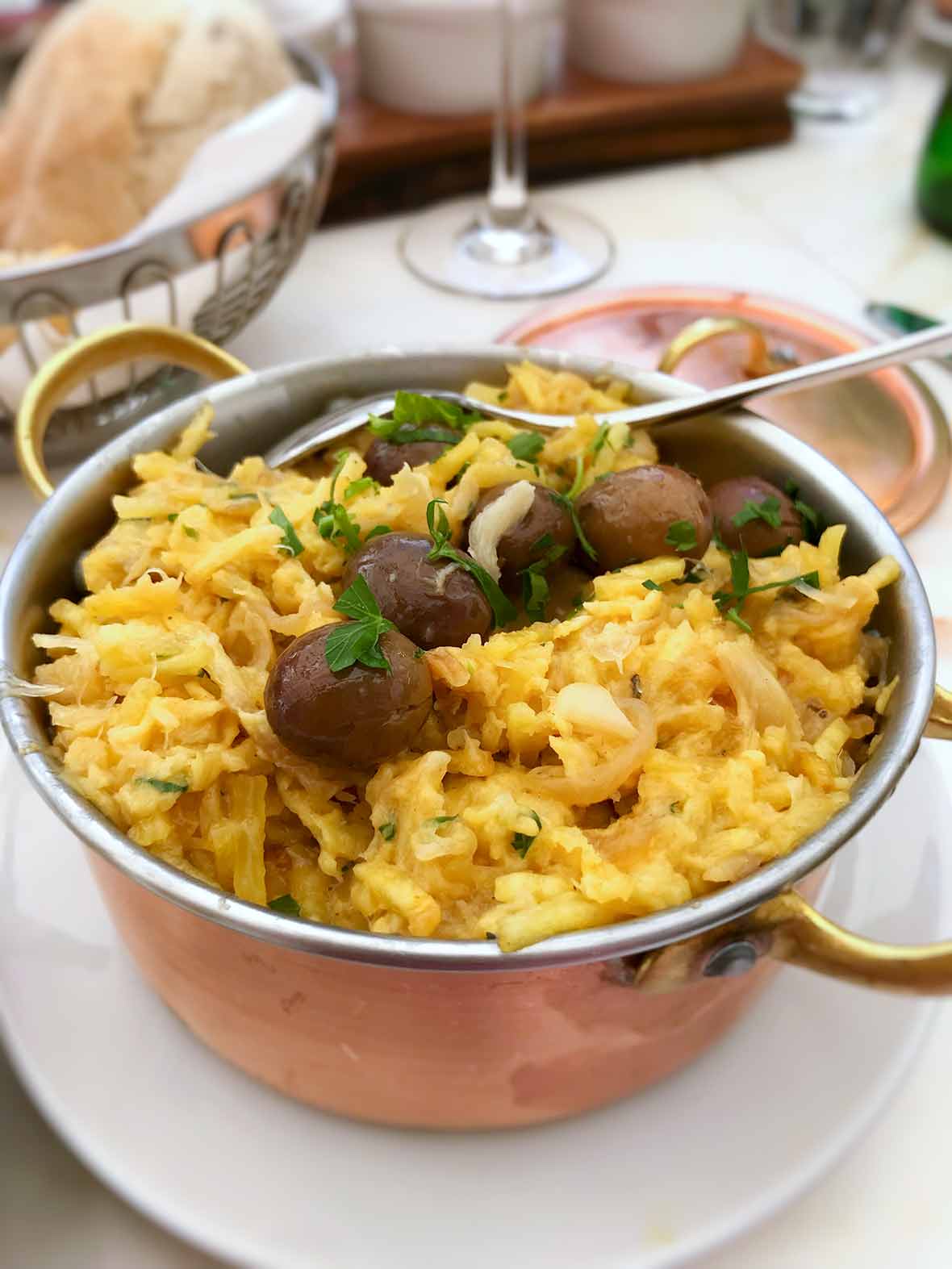
Bacalhau a Brás–scrambled eggs, salt cod, potatoes, onions, and olives
Salt cod plays such an important role in the lives of all Portuguese that it’s said we have 365 recipes for bacalhau—one for each day of the year.
Pork
On the other hand, pork may seem like an unusual staple on sleepy volcanic islands sequestered away at sea. To most Azoreans, cattle were more desirable for its dairy than for its beef. So milk and cheese, which are made into a myriad of delicacies, have served as an unending source of food and income. Pork, quite literally “the other meat,” rose to preeminence.
Pork is so highly prized that every year around Christmas families revel in a two- to three-day celebration called a matança de porco.
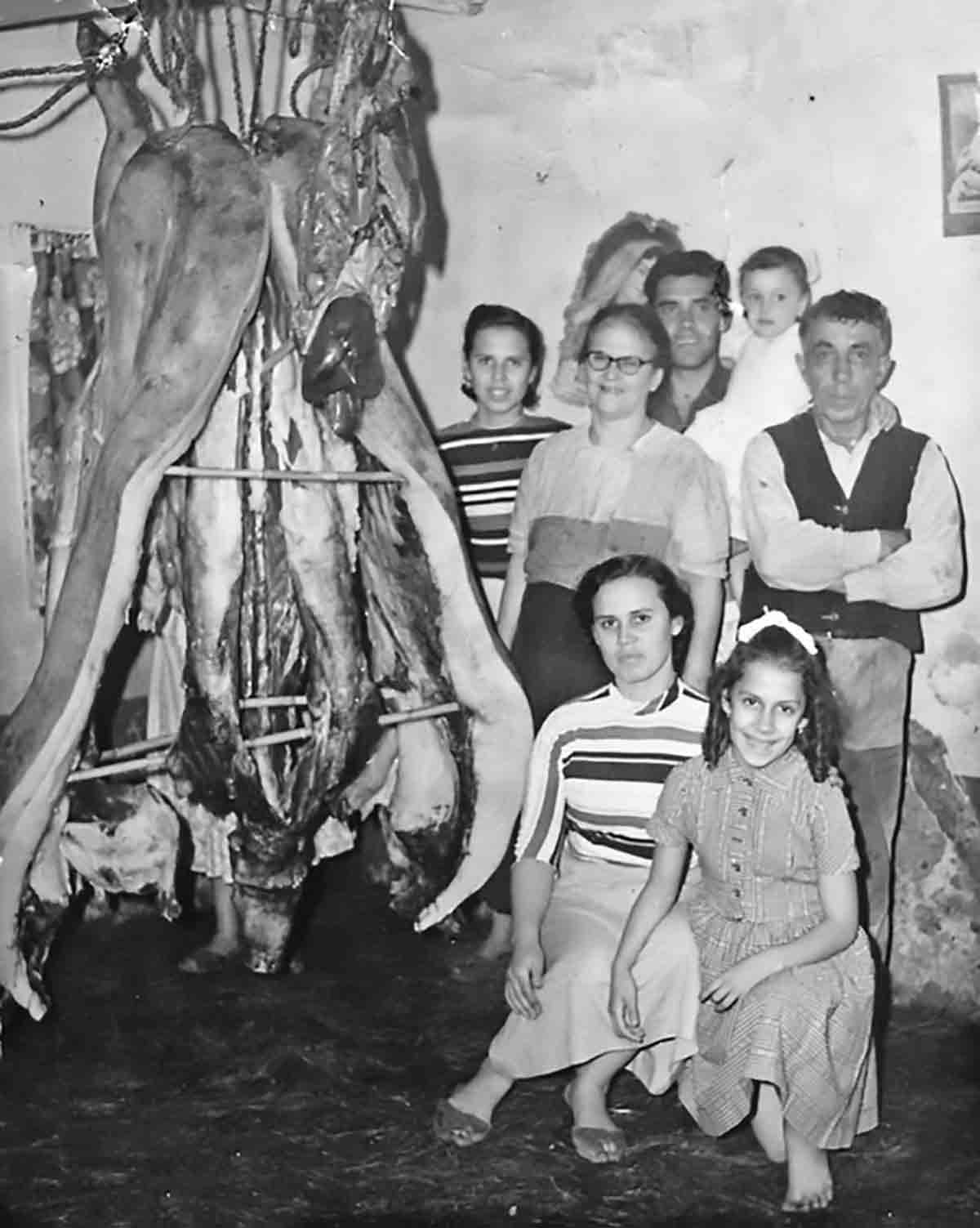
On the first day, the family pig is slaughtered and cleaned, then hung from the ceiling of the home for viewing. That night, friends and family come to see it as what Avila calls “proof of [the family’s] accomplishments.” A simple yet plentiful spread of food and drink is accompanied by joyous singing and dancing.
The following days are devoted to butchering the pig to make the famous linguiça and chouriço sausages, and to prepare cuts for winter meals. As Azorean frugality prescribes, no part of the pig is wasted. Even the organ meats are pressed into service in stews, cozidos (boiled dinner), and soups.
Desserts
Cod and pork may be characteristic of our cuisine, but what really defines it are the desserts—eggy and toothachingly sweet. The Moors contributed this taste for rich, sweet, eggy desserts and we quickly found inventive ways with the whole egg, the white as well as the yolk.

Pastéis (queijadas) de coco | Coconut pastries
While the Moors may have introduced eggy sweets, the addiction to these treats can be blamed squarely on the islands’ nuns. To earn money for their convents, the holy sisters of the 17th and 18th centuries spent their days behind cloistered walls perfecting such whimsically christened delights as olhos de sogra (mother-in-law’s eyes), suspiros (sighs), and barrigas de freiras (nuns’ bellies).
In the end, every cuisine is a product of its physical and cultural environment. Part volcanic soil and salt air, part peasant ingenuity and thrift, the hearty fare of the Azores doesn’t dazzle, but instead comforts.
Some cooks believe it helps assuage the powerful saudade, or longing to belong, every Portuguese person is said to feel—regardless of which secluded, beautiful corner of Atlantis he lives on.













Wow! What a treasure to find. I grew up in Swansea but now live in the West. Needless to say, not much for Portuguese cuisine here. THANKS! I will definitely be a frequenter of this site.
I am so excited to be even a tad closer to finding the information I need to make a Portuguese dinner for my dear man, David. He is from Cape Cod and is also from a family originating on the Azores. He lived near Provincetown, and he has a love for a dish he calls Porco Pão or something of that nature. Do you have any ideas on how to track down the recipe? I have been searching the internet and to no avail. Thanks so much for your work and your experiences.
Kathie, I think I know what David is referring to. (Of course, I could be off, because so many dishes have multiple names.) In my book I have a recipe for Spicy Azorean Garlic-Roasted Pork. If you make that recipe (cutting the pork into cubes instead of chunks), split a crusty roll, and fill it with the pork…I have a feeling David will be quite pleased.
Oh my God! Am I glad I couldn’t sleep! As you may be able to tell by my surname, I am also of Azorean descent. The article was excellent! It was almost word-for-word what I’ve been trying to convey to my friends of all ancestries for many years! I am soooo happy I found this site; which I will frequent often! And I’m getting the book, too!!!! (I am from Fall River, Mass—a HUGE Azorean community since my great-grandparents arrived in this country.) Thank you again for making my day!
Joyce, I’m so happy the post spoke to you. That article means a lot to me, as it was one of the very first I wrote. I, too, am from Fall River, and we later crossed the river to Swansea, where my family still lives.
BTW, the cookbook has a lot of Azorean dishes I, and I’m sure you, grew up enjoying.
Wow! What a small world! Now, I am even MORE proud to be from Fall River!!(Several of my family members live across the bridge now, as well as being scattered around that area and Rhode Island.) I just want you to know that I printed the article! You can’t imagine what it did for me! My ex-husband is from the mainland. My daughter is fifth generation full-blooded Portuguese in this country. She knows about the similarities and differences of BOTH cuisines, and she is definitely a Fall River girl at heart! As we live in CT now, we still go every couple of months to get our chourico, salted cod, Portuguese olive oil, and spices. Do you still live in the area, or you get back there to visit?
I wish you much success with the book… I am ordering an autographed copy, of course!! And please… keep posting those GREAT recipes from the Azores!
Joyce Amaral
Alzira, I live in Litchfield country. And, yes, you can find the book online at Amazon, Barnes & Noble, etc..
I had a friend growing up in Falmouth, MA, her name was Megan Amaral. My mother was a Teixeira, and both sets of her grandparents came from Sao Miguel. I have family that I do not know in Fall River as well as Rhode Island. The one frustration for my brothers and even my sons (which take after the Portuguese side of the family) is the number of people who ask them if they are Mexican! Love this website with the stories that are familiar as well as the food. My husband and son want me to open my own Portuguese restaurant where we live.
Julianna, thank you for your kind words! And best of luck if you open that restaurant!
Does your cookbook have a recipie for making homemade linguica? My nephew is eager to make some.
Marilyn, alas, it doesn’t. But I believe you can find one in Ana Ortins’ Portuguese Homestyle Cooking.
Does anyone have the recipe for the bolo you eat with sardinhas assadas, it it flat like a pancake? Please send to the email dawsons@northrock.bm.
Lisa, do you mean bolo de caco, the round, flat breads from Madeira?
I need this recipe please let me know if you have it, my mom use to make it and she just passed away. Thanks.
In my book there’s a recipe for bolos de caco, which look like large English muffins.
I think you’re talking about bolo do tijolo. These are flat breads made on a tijolo cast iron-like round “griddle” over firewood. It’s now made on top of regular stoves. My grandmother used to make this bread often in Faial. I think it may have originated more on the island of Pico. The women of Pico would come daily to Faial and bring this bread with them to sell in the mercado (market), along with grapes, figs and all the great items Pico was know for. My mother has made it at times here in the states, but it’s never quite the same. But, I can see where the bolo do tijolo would be great with sardinhas assadas nas brasas. Delicious! I found a receipe online that you may want to check out.
Jose, thanks for the insight. Much appreciated by all.
Hi OMG now I have a craving for bolo do tijolo. Yes, being from Faial it was always interesting to see the ladies with all their head gear (baskets upon baskets) on top of their heads. I loved the bolo do tijolos. I am making Portuguese sweetbread as we speak so I will settle for that. I don’t think it’s the Portuguese pancakes that David might be referring to. I do think it is what Joseph was talking about. They are thin and I think made with flour and corn meal??? Gosh, love the Azorean Food…especially bifannas. I think our island has the best sweet bread, too. Maybe I am just bias? Anyway, David, I will have to check out the book. Great article and I live in Connecticut now but for many years lived in Swansea and loved it.
Bolo do tijolo was also known as bolo do Pico. Fantastic with any type of fish, particularly sardines or any “petisco.” My parents recently retired and went back to Faial. My mother use to cook bolo do Pico quite often…I miss it. Other dishes I miss include polvo guisado com vinho tinto, bife de advindalhos, soupa de feijão, caldo verde, and “soupa de couves. Having lived over 30 years in California, what I miss most from the first 18 years of living in Faial and Pico is the food.
Thanks, António. It sounds wonderful. I know how hard it is to miss foods from your childhood or from a foreign place. There are some dishes my maternal grandmother used to make that no one makes now, and there’s an ache inside when I think about it.
GREAT article, thanks to my son Christopher Piggott for giving me this site!! Azorean food is such hearty, wonderful food, the original SOUL FOOD IMO! I, like Joyce Amaral, am from Fall River, MA, and my grandfather came here from Riberia Grande in 1897. If you are new to this type of food TRY IT, you will love it!!
Hi Joyce, I have been hoping to find someone who can tell me what might be served for a traditional Christmas dinner on the island of Sao Miguel. My Grandmother’s family was from there; her name was Elsira Amaral. Unfortunately, I was not given the opportunity to spend time with my Grandma. She did teach me to make hollandaise sauce and scramble eggs, but that was the extent. I have few memories of her and her family…just that they were all short like me and generally happy people. Might you be able to tell me what a traditional Christmas dinner consisted of?